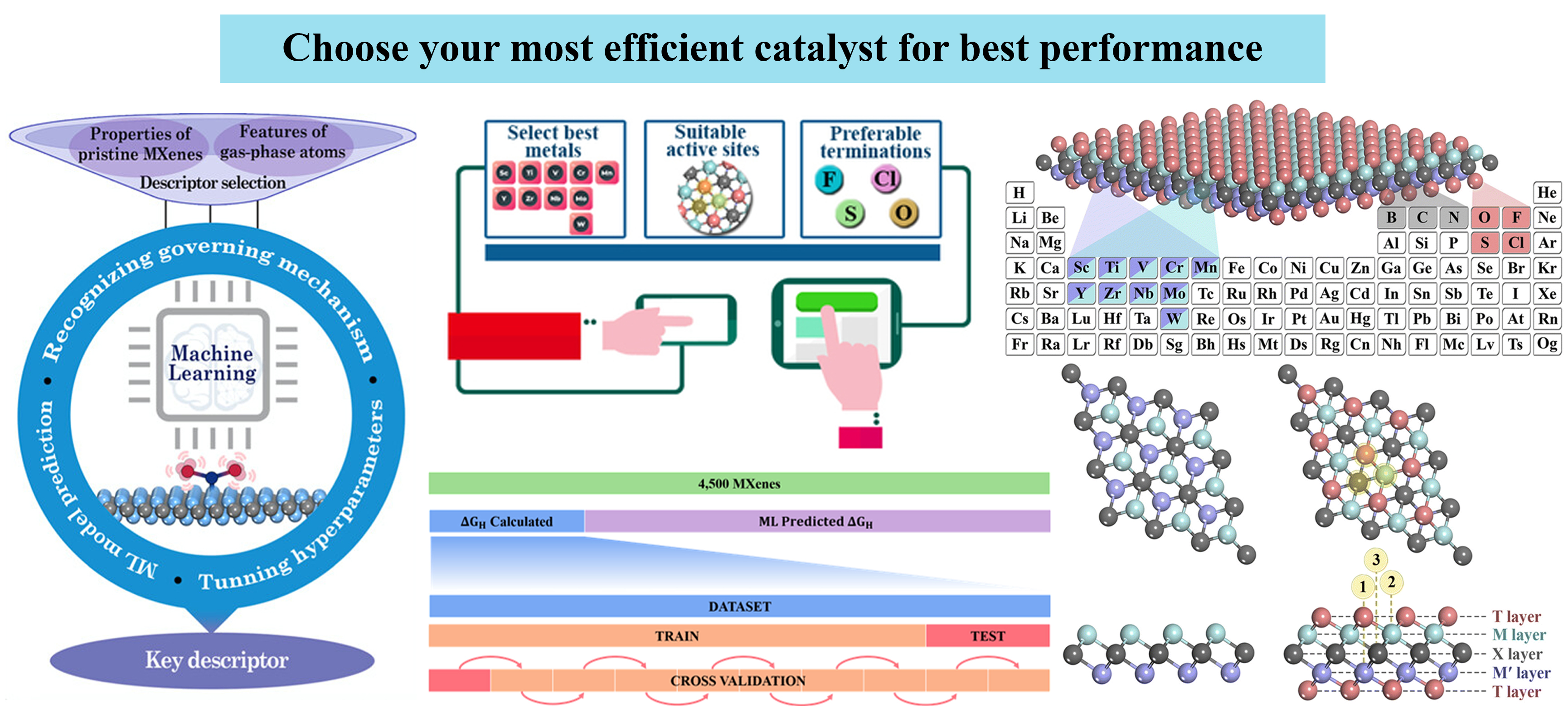Research Interests:
As a materials scientist with expertise in both advanced computational techniques and machine learning, I am dedicated in the design and development of novel materials for sustainable energy and environmental applications. One such challenge that has caught my attention is the increasing concentrations of CO2 in the atmosphere and its effect on climate, which has prompted many countries to set targets for reducing greenhouse gas emissions. At the recent 28th Conference of the Parties (COP28), most of the countries set a challenge to achieve net-zero emissions of greenhouse gases by 2050, emphasizing the need for developing technologies that can close the carbon cycle by converting CO2 into fuels and commodity chemicals. Discovering novel catalysts is the heart of the translation science activity that could contribute to the innovation of real-world energy. Unfortunately, efficient technologies for transforming CO2 into hydrocarbons is currently lacking, primarily due to the absence of a suitable electrocatalyst, thereby highlighting the current technological gap in this area.
The objective of my independent research is to design, develop and create open-source database to understand the rationalizing ‘real’ discovery of 2D materials for CO2 reduction reaction (CO2RR) in its broadest sense by fusing quantum mechanical models with modern machine learning approaches. This high-level aim will be achieved by addressing the following objectives: i) High throughput screening of 2D materials will be conducted to exclude the incapable candidates prior to utilization of resources on formulation. ii) Study the adsorption and electronic structure of 2D materials to understand the governing mechanism that is related to the potential catalytic activity for CO2RR. iii) Modern ML/AL model will be developed to facilitate the discovery of new design rules by exploring unearthed spaces for identifying novel 2D materials. iv) Exploring the complete free energy profiles of the down selected candidates for the CO2RR, which confirms the suitability of the selected catalysts.
As the long-term goals, the fundamental outcomes of this research will be extended to other electrocatalytic reactions, such as methanol deformation, photocatalytic water splitting reaction, fuel cell-oxygen reduction reaction, nitrogen reduction reaction, etc to unveil the highly efficient catalysts for the corresponding reaction. This high-throughput research will generate a database of activity-selectivity-nanostructures, which is one of the main research interests of the electrocatalyst community.
Teaching Statement and Experience: Teaching and advising represent the cornerstone of my academic pursuits. I am excited about the prospect of becoming a faculty, as it affords me the privilege of engaging with students through these vital activities. My teaching philosophy centers on promoting long-term learning and skill development, where the ultimate goal is to help students gain a deep understanding of the subject matter and learn how to apply their knowledge effectively. In my teaching approach, I'm highly dedicated to helping students become critical thinkers by giving them a solid technical background and showing them how the subjects we cover relate to society.
My teaching experiences during my doctoral and post-doctoral tenure is primarily centered around undergraduate and postgraduate courses. One of the more challenging yet rewarding aspects of my teaching journey was in the laboratory environment, where I had the responsibility of engaging students in the acquisition of theoretical skills. The diverse backgrounds and levels of familiarity with the subject matter among the students taught me the importance of continuously refining and adapting my teaching techniques. In particular, I was deeply involved in High-Performance Computing (HPC) tutorials, where I guided new students in essential skills such as cluster installation and software setup in HPC environments. Additionally, I provided instruction on conducting complex calculations on HPC systems, ensuring that students were well-equipped with the practical skills required in this domain.
Teaching Interests: My teaching approach is based on combining theory and practice with a focus on supporting student's natural creativity and helping them connect abstract concepts with real-world applications. Through my experience as a PhD and post-doctoral fellow in the departments of Physics, Chemical Engineering, and Materials Science & Physical Chemistry, I am comfortable in teaching courses that integrate concepts from these multifaceted domains. I am keen to contribute to curriculum development and the creation of advanced courses that align with the institutional growth and departmental activities. For instance, I aspire to design innovative courses, such as a dedicated curriculum on Machine Learning for Property Prediction and Introduction to Materials Modelling and Simulations. This collaborative approach not only ensures the course's relevance to the rapidly evolving field of computational materials science but also promote a dynamic learning environment that benefits both students and the institution.


